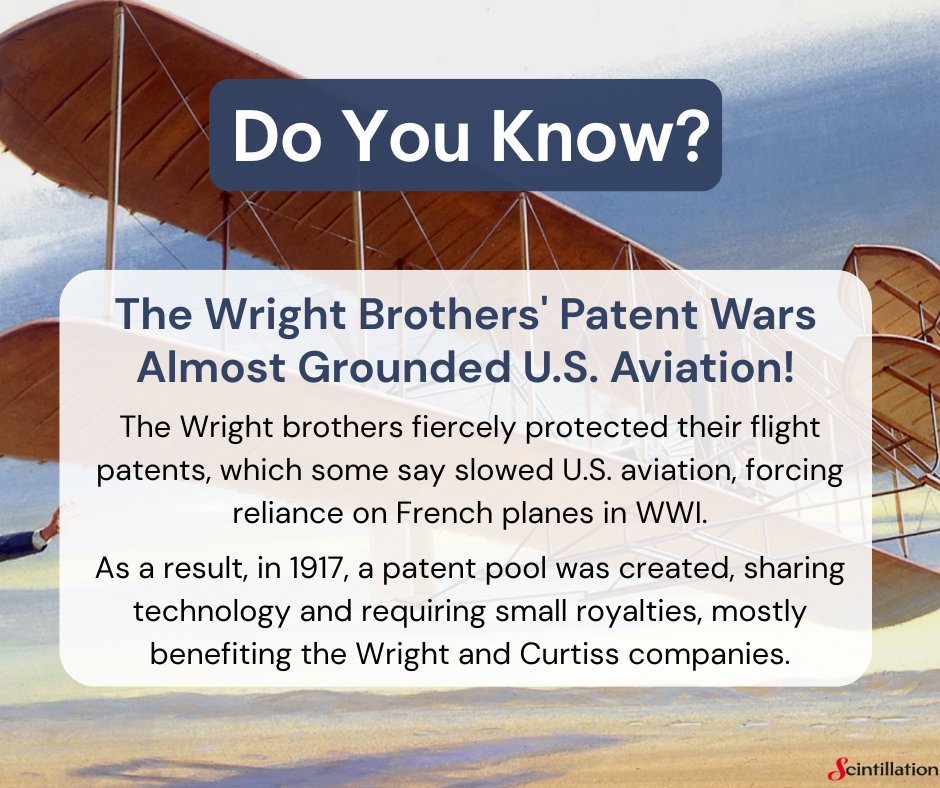
The Patent War That
Forced the US to Fly French
The Wright brothers, celebrated worldwide for their groundbreaking achievements in powered flight, were not only inventors but also sharp defenders of their intellectual property. After their first successful flight, they became deeply invested in protecting their patents, particularly those covering the principles of controlled flight. Over the years, they launched a series of lawsuits against individuals and companies they believed were infringing on their technology.
Many historians believe it slowed the growth of the aviation industry in the United States by discouraging innovation and limiting collaboration at a critical time. The situation became so pronounced that, when the United States entered World War I, it had to rely heavily on French aircraft and designs to meet its military needs.

However, this litigious nature of the Wright Brothers almost led to their downfall—while they were out litigating, competitors, such as Glenn Curtiss, continued to design aircraft control methods that didn’t infringe on their patent and the Wright Brothers started to lag behind with their research and development.
In 1917, because some believed that the two major patent holders, the Wright Company and the Curtiss Company, had effectively blocked the building of airplanes needed during the war, a newly established National Advisory Committee for Aeronautics pressured the industry to form a cross-licensing organisation. This organisation effectively created a patent pool, and all aircraft manufacturers were required to join this association. Each member of the association was required to pay a comparatively small royalty for each airplane manufactured covered by aviation patents; most of the fees went to the Wright and Curtiss companies, until their respective patents expired.
